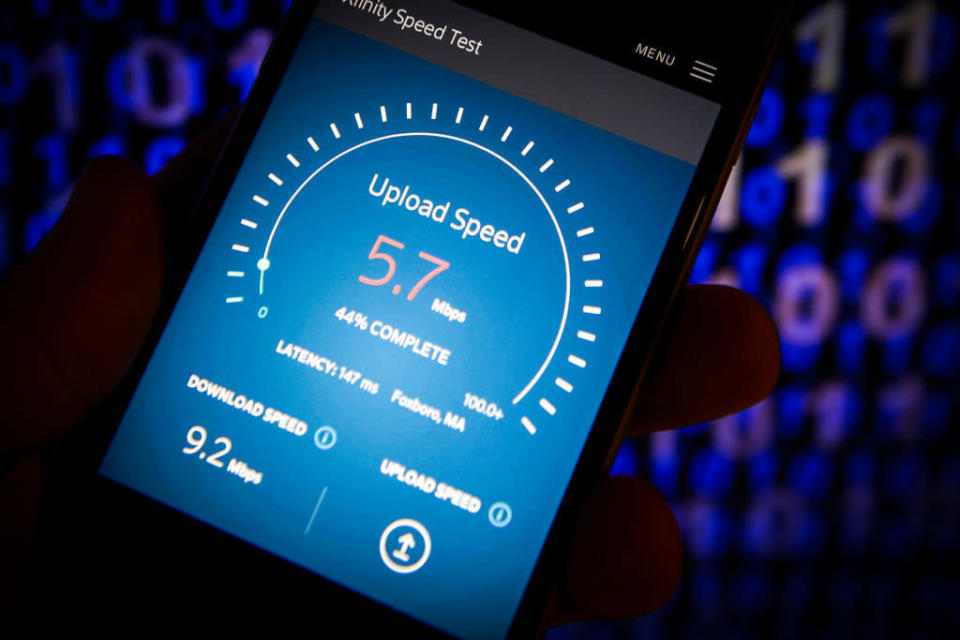Australia falls to a ridiculously-low 62nd place in global internet speed rankings

Australia is now ranked in the 62nd spot in the global broadband speed rankings, falling down three spots from last year and well behind similar advanced economies.
According to the Ookla Speedtest Global Index, Australia ranks behind Kazakhstan and Cape Verde, but above Jordan, Brazil and Saudi Arabia, with an average download speed of 35.11 Mbps. This is well below the global average download speed of 57.91 Mbps.
The top spot is held by Singapore on 199.62 Mbps, followed by Hong Kong at 168.69 Mbps and Monaco at 137.86 Mbps.
However, Australia does rank much better in mobile broadband, at 5th place - with a speed of 58.87 Mbs. Norway took out the top spot with a speed of 67.54 Mbps.
The National Broadband Network (NBN) in Australia has been touted as a game-changer to Australian internet speeds, offering speeds of up to 100 Mbps but the ACCC in 2018 found only 69 per cent of all speed tests achieved download speeds of above 90 per cent of maximum plan speeds, while seven per cent of tests recorded less than 50 per cent of the maximum.
Recent figures from the NBN show there are now more than 4.6 million premises with the NBN, up 38 per cent from 2018. Despite this, speeds across the country have not increased.
NBN said in a statement that 57 per cent of activated premises were “connected to the 50 Mbps wholesale download speed tier plans or above” compared to 16 per cent for the same time last year.
Image: Source: NBN
RMIT University Associate Professor of Engineering Mark Gregory told Business Insider Australia anyone looking at the Ookla rankings “needs to temper their consideration” given the NBN is a national rollout and that some countries with access to high speeds compared to Australia had a much smaller user base.
“There’s a big difference between an outcome that’s national and an outcome that might only cover 10% of a population in a country,” Gregory said.
While Kazakstan ranks above Australia, 86 per cent of the population lacks access to fixed broadband, according to stats cited by a spokesman for Communications Minister Mitch Fifield in the Sydney Morning Herald.
Gregory added that despite the comparison being a difficult one, Australia is still not kicking any goals in the speed department.
“It’s a bit of comparing apples with oranges, but I would say that if you look at it in terms of the trend and the numbers of connections and what those connections are providing then you would have to say Australia is doing very poorly," he said.
Gregory said nations of similar size, or significantly greater numbers of connections, outperformed Australia.
In March, the Labor party ruled out overhauling the NBN, with Labor communications spokeswoman Michelle Rowland telling the Sydney Institute the Liberal-National Coalition had driven up costs and done serious damage to the project.
Related content: $250,000 LIES: NBN provider busted for misleading ads
Related content: How your TV or broadband bill might creep up in the new year
Related content: Ranked: Australia’s fastest internet providers for NBN and Netflix
She said that the Labor party, if elected, would spend $185 million on improving the network, with a review of the $50 billion project to follow.
The Sydney Morning Herald reports Labor plans to spend $125 million on fixing in-home wiring problems for up to 750,000 people, with the leftover $60 million used on adding 20,000 people to the high-speed fibre network.
Gregory said he supports Labor’s proposal and believes that the Ookla figures demonstrate that the decision taken in 2013 to change technologies used in building the NBN was wrong.
Ex-prime minister Malcolm Turnbull was the communications minister responsible for the NBN when the government, under the leadership of Tony Abbott, reworked the network with different technologies. In 2014, the majority of the network design switched from fibre to the premises (FTTP) to fibre to the node (FTTN), creating a mix of technologies. In 2016, the government announced another change to fibre to the curb (FTTC).
Alex Choros, Managing Editor at WhistleOut, told Business Insider the mix of technologies created issues around cost and maintenance as copper wiring degrading faster than fibre optic.
"Over a long period of time there may be some savings from using fibre to the premises," he said.
He said that because NBN did not mix technologies within areas it made maintenance in some places easier, as the mix of technologies did not compete. However, he said the problem was more for consumers who were locked into technology types and connection speeds based on where they live and when they got the NBN.
"From a consumer perspective, it makes it more complicated in some ways and not in others," he said.
"There are about 7-8 technologies in the multi-technology mix but as a consumer, you can only get one."
The Coalition's multi-technology NBN model was marketed as delivering a cheaper network sooner but ultimately faced huge cost blowouts.
“The one that is going to have the most impact in the medium to longer term is if Labor is able to identify how to move us back toward an all-fibre network whilst maintaining competition,” Gregory said.
NBN told Business Insider Australia they were unable to make a comment at this time due to caretaker provisions from the government during this election period.
Make your money work with Yahoo Finance’s daily newsletter. Sign up here and stay on top of the latest money, news and tech news.

 Yahoo Finance
Yahoo Finance 